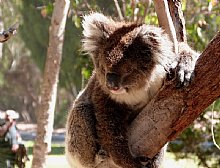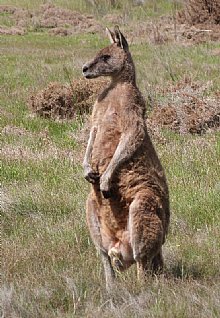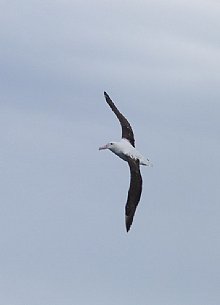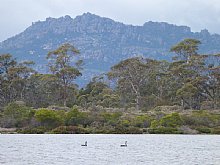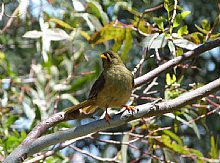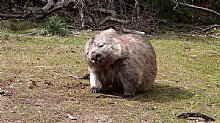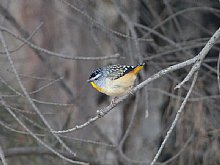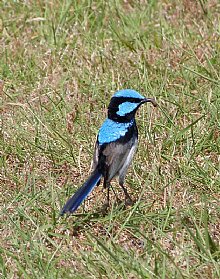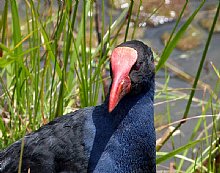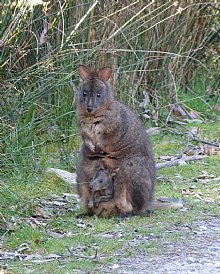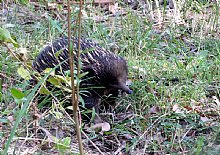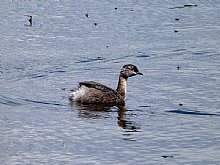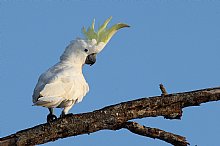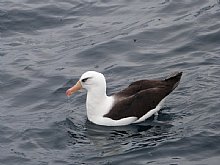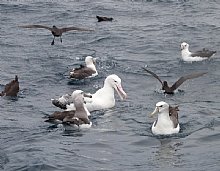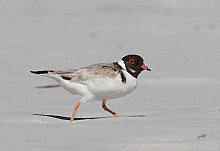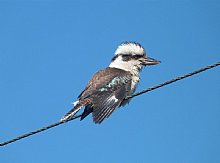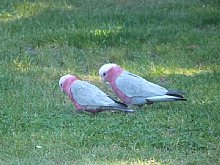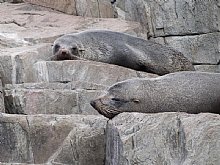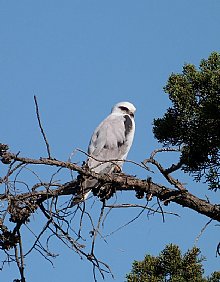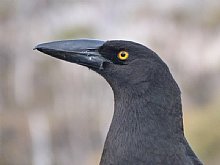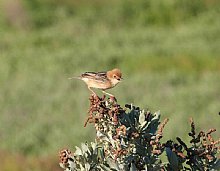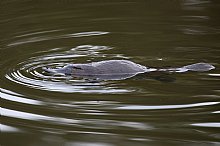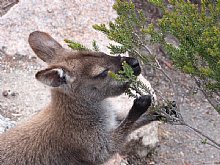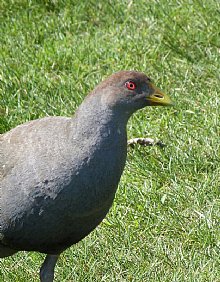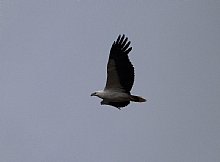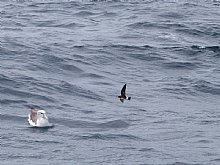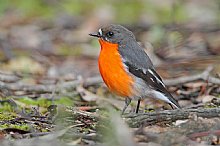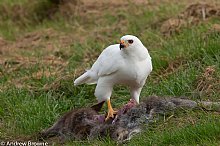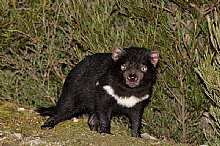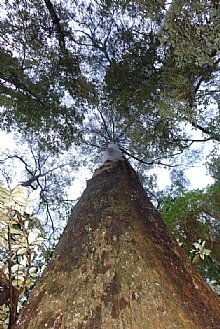Tasmania and South-eastern Australia
A naturalists paradise 'Down Under' - a superb highlights tour of Tasmania and SE Australia
| Destination | |
|---|---|
| Focus | |
| 2025 Dates | |
| Duration | 17 Days |
| Guides | |
| 2025 Price | £8595 pp £1090 single supplement. Deposit £1500. Expert local guides will be joined by one from the Heatherlea team with over 8 clients. pre-flight airport hotel and lounge are inc. |
| Max Group Size | 12 |
- Free Bird Guide
FREE copy of Birds of Australia with every room booked on this holiday.
- Tour Info Pack
- Enquire
In addition to its rich history, vast tracts of stunning wilderness, remote mountainous areas and many unspoilt islands, Tasmania offers a wealth of wildlife and birding opportunities.
Of particular interest to the general naturalist, we seek key mammals and marsupials as well as birds and the wonderful endemic flora and fauna that makes this country area so special . This tour takes place in the Australian spring, with pleasant temperatures, longer days and migratory birds arriving from their northern winter grounds.
We start on the Mainland, covering a variety of habitats, all within a few hours easy drive of Melbourne. Our Tasmania tour is a superb introduction to the island, covering all of its habitats from the mountains, through the primary forest down to the rich coastline.
This tour can be combined with our holiday to Queensland, read more on our 'Grand Tour' page.
Day 1: 1 December 2025 Depart London
After relaxing in our complimentary VIP Airport Lounge, we board our flight to Melbourne.
Day 2: 2 December Arrival into Melbourne
This day is set aside as an arrival day. Tonight, you will meet your local Australian guide at dinner and enjoy an orientation talk. Accommodation: Ciloms Airport Lodge
Day 3: 3 December Melbourne to Lorne via Werribee
This morning we will travel to the south-west of Melbourne and wend our way through the shorelines and various swamps of western Port Phillip Bay, where we’ll aim to pick up a few wetland and grassland birds like Sharp-tailed, Curlew & Marsh Sandpipers, Red-necked Stint, Red-kneed Dotterel, Black-fronted Dotterel, Red-capped Plover, Pacific Gull, Hoary-headed Grebe, Australasian Gannet, Pied, Little Pied, Great & Little Black Cormorants, Australian Pelican, Crested, Fairy & Whiskered Terns, Australian Shelduck, Red-necked Avocet, Banded & Pied Stilts, Royal & Yellow-billed Spoonbills, White-fronted Chat, Striated Fieldwren, Horsfield’s Bushlark, Brown Songlark, Australian Pipit, Yellow-rumped Thornbill, Golden-headed Cisticola, Zebra Finch, Swamp Harrier, Wedge-tailed Eagle, White-bellied Sea-eagle and Black, Brown & Peregrine Falcons. In the mid to late afternoon, we will venture onto the Great Ocean Road where we will enjoy a picturesque drive along this rugged stretch of the Victorian coastline. We overnight in a small town in the area. Accommodation: The Anchorage Lorne
Day 4: 4 December Lorne
Another day in this beautiful area gives us the opportunity to venture into the Great Otway National Park, an area of cool temperate rainforest with ancient Antarctic Beech, Mountain Ash and tall tree ferns. Birds of these forests include Eastern Yellow Robin, Golden Whistler, Crimson Rosella, Superb Fairywren, White-browed Scrubwren and Satin Bowerbird. We will also visit an area of open coastal heathland where we hope to find the endemic Rufous Bristlebird and the delightful Southern Emu-wren. During the day, we’ll maintain a lookout for Koala. Accommodation: Lorne
Day 5: 5 December Lorne to Halls Gap
Today we leave the coast behind us and make our way inland across the Western Volcanic Plains with their shallow salt lakes, to our destination for the next two nights, Halls gap in the Grampians. This rugged range of sandstone mountains in Victoria’s north-west rises dramatically from the Western Plains and is one of the most scenic areas in the state. Accommodation: Grampians Motel
Day 6: 6 December Halls Gap
Today we have a full day to enjoy the offerings of the Grampians. Tall Eucalyptus forests, fern-lined gullies and dry woodlands are some of the habitats we will encounter as we explore the area for wildlife. In addition to the stunning vistas and waterfalls the area boasts over 200 bird species, well over 800 indigenous plant species and at least 30 mammal species. Today we are sure to enjoy a bounty of memorable sightings as the Grampians are an excellent site for a number of sought after species including Emu, Australia’s national bird, Painted Honeyeater, Speckled Warbler, Black-eared Cuckoo, Little Lorikeet, Long-billed Corella, Zebra Finch and Yellow-faced Honeyeater. Mammals we may encounter include Black and Red-necked Wallaby and Eastern Grey Kangaroo. While in the area we will enjoy a night excursion where we may encounter Brush-tailed and Ring-tailed Possum and, if we are very fortunate, Sugar Glider! Tawny Frogmouth and the impressive Powerful Owl are also possible. Accommodation: Grampians Motel
Day 7: 7 December Halls Gap to Melbourne and fly to Hobart
Today is a travel day but if time permits, we will enjoy a brief walk before we make our way to Melbourne where we will connect with our flight to Hobart. On arrival we will settle into our hotel in Tasmania’s charming and quaint capital. After dinner, we will offer an optional night tour where we will be sure to see Brush-tailed Possum and Tasmanian Pademelon. Here we will search for Southern (Tasmanian) Bettong and Eastern-barred Bandicoot both of which originally had a south-eastern Australian distribution and now almost exclusively occur in Tasmania. Tawny Frogmouth and Southern Boobook or Morepork are also possible in the reserve. Accommodation: The Old Woolstore Hotel, Hobart
Day 8: 8 December Hobart and drive to Eaglehawk Neck
We leave this morning to travel up the East Coast to Triabunna, where we will take the short 30-minute ferry ride across to Maria Island, an island with a rich history, a World Heritage Listed Probation Station, fossil cliffs and a great array of wildlife. On the way across to Maria Island, we shall look out for seals, dolphins, orcas and whales. Maria is a fascinating island with a wide variety of bird and mammal species. Of the mammals, we can expect to see Forester Kangaroo, Tasmanian Pademelon, Bennett’s Wallaby and Common Wombat. Maria Island also has an abundant bird assemblage, with 11 of the 12 Tasmanian endemics occurring here. We shall use our time to stroll slowly around the northern part of the island, with some outstanding scenery and the chance of seeing a large number of bird species including Cape Barren Geese, Australasian Pipit and Skylarks on the grazed grasslands and Forty-spotted Pardalote, Swift Parrot, Black Currawongs and several species of honeyeaters in the wooded areas. In the late afternoon, we will head back on the ferry. Accommodation: Lufra Hotel, Eagleneck
Day 9: 9 December Tasman Island National Park.
Today we intend to explore the wonderful Tasman Peninsula. We will visit some great birding locations within the National Parks which are also incredible geological formations such as The Blowhole at Eaglehawk Neck, the stunning Tasman Arch and the Devils Kitchen viewpoint. We shall venture out the Remarkable Cave with stunning views out to Cape Raoul and to the Salt River Coal Mine where the convicts established Tasmania's first operational mine, and in now a historic site where many of the walls of the buildings and cells still stand. All these sites will give us a lovely selection of birds, with endemic birds such as Green Rosella, Yellow-throated Honeyeater and Yellow Wattlebird likely in some of the forested sites. Other beautiful birds such as Flame Robin, Striated Pardalote, Golden Whistler, Pallid Cuckoo and Black-faced Cuckoo-shrike are all possible on the Peninsula at this time of year. Returning to our accommodation late in the afternoon you have a chance in your free time to walk down to the Tessellated Pavements or visit the Dog Line historic site that stretches across the Neck. Accommodation: Lufra Hotel
Day 10: 10 December Hobart and Bruny Island
Today we have a further chance to explore the Tasman Peninsula before heading back towards Hobart, visiting some wetlands and coastal locations enroute such as Marion’s Bay and Orielton Lagoon for a variety of waders and shorebirds. We then make our way to Bruny Island, our home for the next few days of our adventure!
Bruny Island, situated about 40km south of Hobart, is separated from the Tasmanian mainland by the D’Entrecasteaux Channel and accessed by a vehicle ferry. The ferry trip takes approximately 15 minutes where we will enjoy some wonderful scenery and possibly Little Penguins or dolphins alongside the ferry. This afternoon we will visit Bruny’s southern coastline to view the second oldest lighthouse in Australia where we will search for species such as Tawny-crowned Honeyeater, Olive Whistler and Yellow-tailed Black-cockatoo. Here we also have a chance to see the Tasmanian subspecies of Short-beaked Echidna, one of Australia’s two egg-laying mammal (montreme) species. On one of our two nights on Bruny, (depending on best weather conditions), we will visit the Little Penguin and Short-tailed Shearwater colony to view these species at their burrows. We will also take an evening drive in search of Tasmania’s nocturnal marsupials. We are likely to see some species which are now restricted to Tasmania including Eastern Quoll (a relative of the Tasmanian Devil) and Tasmanian Pademelon. Bennett’s Wallaby and Brush-tailed Possum are also common here and rare golden/white colour morphs of both these species can sometimes be found. If we are lucky, we may also see Long-nosed Potoroo and some nocturnal birds like Tawny Frogmouth and Tasmanian Boobook Accommodation: Explorers Cottages, Bruny Island.
Day 11: 11 December Bruny Island
Today we have a full day to explore Bruny Island, a privately owned 1,500-acre wildlife sanctuary which is home to all 12 Tasmanian endemic bird species, including one of the largest known colonies of endangered Forty-spotted Pardalote. The variety of habitats found on the island provide a whole host of birding opportunities; from coastal beaches, where there is a possibility of finding Hooded Plover, Australian Pied and Sooty Oystercatchers, to rainforest areas where we will search for the endemic Scrubtit and Tasmanian Thornbill. We will also make an effort this day to find all the remaining Tasmanian endemics with Strong-billed Honeyeater and Dusky Robin likely highlights. Several hides and platforms have also been built around the property which provide close views of some very special species, including a variety of raptors. If we are fortunate, we may encounter the striking white morph Grey Goshawk that is regularly seen on the Inala Reserve, along with chances of White-bellied Sea-eagle, Brown Goshawk, Brown Falcon and if we are lucky, Wedge-tailed Eagle. We will also take the time to enjoy some interesting flora, including Tasmanian endemic species and relics from the ancient Gondwana Supercontinent. Tonight, we will enjoy another night trip for the chance to see a range of Tasmania’s nocturnal marsupials (including Eastern Quoll and “normal” as well as white morph Red-necked Wallaby and Brush-tailed Possums) as well as searching again for Tawny Frogmouth and Morepork (formerly Southern Boobook). Accommodation: Explorers Cottages, Bruny Island.
Day 12: 12 December Bruny Island to Mount Field
Today we depart Bruny Island and spend a bit of time exploring the reserves in the Hobart area including kunanyi (Mount Wellington). This mountain, at a height of 1,270m (around 4,150 feet), affords spectacular views of the city and surrounding landscape on a clear day. Here we will also take a walk through a fern glade with towering tree ferns where we have another chance to see the endemic and rather shy Scrubtit as well as Tasmanian Scrubwren and the stunning Pink Robin. Further endemic highlights we will look for today include Green Rosella, Tasmanian Native Hen, Black Currawong and Yellow Wattlebird. We will also visit a lagoon for the chance to see a variety of waterbirds like Australasian Shoveler, Australian Shelduck and Black-fronted Dotterel before heading to our accommodation for tonight near Mt Field National Park. Accommodation: Curringa Farm, Hamilton
Day 13: 13 December Mt Field area to Cradle Mountain
This morning we will leave the Mt Field area and travel towards Cradle Mountain National Park. While this will mainly be a day of travel, we will enjoy some lovely scenery and stop en route to bird and stretch our legs. e will arrive at our accommodation close to Cradle Mountain in the late afternoon. After we have settled into our accommodation, we will enjoy an exclusive twilight tour of the local wildlife conservation sanctuary, home primarily to Tasmanian devils, as well as Spotted-tail and Eastern Quolls. Accommodation: Cradle Mountain Hotel
Day 14: 14 December Cradle Mountain area
Today we have a full day to explore Cradle Mountain and parts of northern Tasmania. This should provide a good chance to see more of Tasmania’s endemic bird species which we may have missed previously, such as Black Currawong and Yellow Wattlebird. n addition to the great birding, we can view endemic Tasmanian rainforest flora with ancient Gondwanan connections such as Pencil and King Billy Pines, Myrtle and the famous Fagus (Nothofagus gunnii) which is Tasmania’s only deciduous tree. This is also a good area to view Common Wombat and if we are fortunate, we may see Platypus. Tonight, after dinner, there will be the option for a spotlighting tour to try to find some of Tasmania’s nocturnal animals in their natural habitat. Accommodation: Cradle Mountain Hotel.
Day 15: 15 December Cradle Mountain area to North Coast
We depart the Cradle Mountain area after breakfasting this morning and travel towards Tasmania’s northern coastline. En route we will stop at some additional places where Platypus are seen on a regular basis as well as visiting Narawntapu National Park. The park boasts some impressive marsupial lawns (well grazed areas frequented by marsupials) that hold some of the highest densities of Common Wombat, Tasmanian Pademelon and Red-necked Wallaby in Tasmania and is often referred to as the “Serengeti of Tasmania”. Eastern Grey (Forester) Kangaroos can usually be seen feeding during the late afternoon. After dinner there will be another optional night tour to search for Southern Brown Bandicoot and Long-nosed Potoroo. Accommodation: Hawley House, Port Sorell
Day 16: 16 December North Coast to Launceston, Flight to Melbourne, return flight to UK.
If time permits we will visit some wetlands en route where there is a chance to view a number of wetland species including Purple Swamphen, Australian Shelduck, Black-fronted Dotterel and the retiring Little Grassbird. We travel to Launceston after breakfast where we will transfer to our flight home, landing in the UK on Day 17, Wednesday 17th December 2025.
Please note: all itineraries are given as a guide only. Actual holiday content may vary according to the judgement of your guide, and elements beyond our control (eg weather).
What's included in your holiday price:
- scheduled return flights from London - Melbourne. Domestic flights from Melbourne- Hobart, Launceston - Melbourne, Airport taxes and transfers.
- ground and boat transportation as outlined.
- 14 nights full-board accommodation, including breakfast, lunch and dinner, plus 2 overnight flights.
- the services of your leaders.
- field trips as specified.
- The Heatherlea Pre-Flight Service offers everything you need at the airport, including hotels, car parking, airport lounges, regional flights, and upgrades. Let Heatherlea take the strain! Pre-flight airport hotel and lounge included free of charge subject to terms and conditions. Read more....
Free Field Guide! - 'Birds of Australia' by Graham Pizzey is included in your holiday price. One copy per room booked.
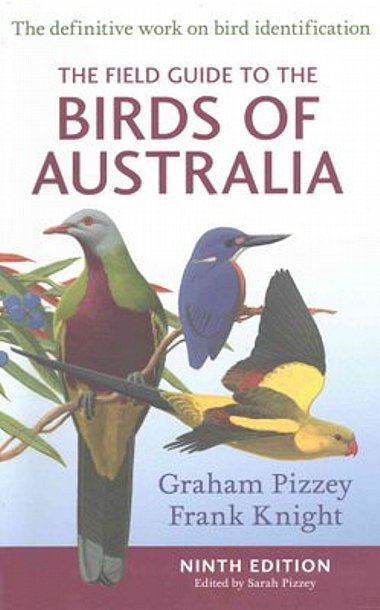
What's not included in your holiday price:
- personal insurance, drinks and other personal expenses
- visa costs
- optional tips to local guides/other staff
- any other costs not specified as 'included'.
More holiday information:
Flights: Many of our guests may choose to spend more time in Australia, heading out before the trip starts and meeting us at the airport or remaining behind after to visit other parts of Australia. We can arrange flights accordingly, please speak to the office for more details.
Visas: Visas are required for all travel to Australia.The requirements for these have been updated in recent years. British citizens can obtain the following types of electronic visitor visa: An online e-Visitor visa direct from the Department of Immigration & Citizenship.There is no visa application charge or service fee for this. Information about this type of visa can be found online here: http://www.border.gov.au/Trav/Visa-1/651-
Meals and drinks: Breakfast generally consists of a continental style breakfast with cereal, fruit and yogurt and tea/coffee. Lunch will generally consist of a packed lunch style meal eaten in the field, with sandwich/filled roll, fruit, and a drink. Dinner usually consists of several options for main with the choice of either an appetiser or dessert. Drinks (soft and alcoholic) are generally not included but at lunches and breakfasts juice may be made available.
The itinerary: Whilst we aim to follow the itinerary as planned, please note that the itinerary provided should only be used as a guideline. Depending on individual trip circumstances, weather, and local information, the exact itinerary may not be strictly adhered to. The guides reserve the right to make changes to the itinerary as they see fit.
Weather: The tour runs in late spring, early summer. Temperatures at this time of year can vary although mild to warm weather can be expected. You can expect comfortable conditions on most days with average daytime temperatures in the mid-twenties. In both Victoria and Tasmania we will be spending time in high country where, in the evening and early morning, minimum temperatures may drop below 10°C. On the pelagic we can expect cold conditions due to cold ocean temperatures and wind chill. We may encounter rain although this is typically not a wet time of year (most rainfall occurs in the winter months). Average monthly rainfall in November and December in the region is well below 50mm.
Daily Routine: While this is not a fast paced tour, we will take advantage of the heightened birding and wildlife activity of early mornings and afternoons and enjoy some evening spotlighting excursions. On travel days we will do our best to break longer journeys with comfort stops. Most days will start with an early breakfast followed by an excursion and then a picnic lunch to maximise time in the field. We typically then enjoy an afternoon excursion and have a bit of downtime in the late afternoon/early evening before dinner. Many excursions are optional.
Biting insects and venomous creatures: Although biting insects are not regularly encountered on this tour, mosquitoes (malaria free) may be present at certain places. Wasps and bees occur but are generally not a nuisance. There are a number of species of biting ants (jack jumpers and inchmen) that can inflict painful bites however incidents with these insects on tour are extremely unusual. Venomous creatures are very seldom encountered on this tour. Tasmania has only three species of snake (all venomous) but, as with most snake species, they are not aggressive and seldom seen.
Walking: There is no demanding walking on this tour with the birding/wildlife locations easily accessible on foot. Guests can expect comfortable walking at the pace of a stroll and while walking is mostly on flattish trails and dirt tracks there will be the occasional hill and uneven terrain.
Accommodation: Accommodation is chosen for its proximity to good wildlife viewing areas and are generally in comfortable cabin/bed-and-breakfast type establishments. At most sites we accommodate all guests in en suite facilities but at some Tasmanian locations there may be shared bathrooms. These sites offer us the best chances of Platypus and Tasmanian Devil so we wouldn't want to miss them!
Other birding and wildlife holidays in Australia
Why choose Heatherlea for your birding and wildlife holiday?
Our overseas holidays are planned with care to offer great birding and wildlife, led by capable Leaders who really look after you. Every holiday is run the 'Heatherlea Way', and we hope our Overseas Adventures remind you of the quality and care so many of you enjoy in Scotland. That means rewarding and exciting days in the field, and good quality accommodation and meals, with a real flavour of the country we are visiting. Heatherlea always seek to include the personal touches that make all the difference.
Heatherlea holidays are not ‘dawn to dusk’ expeditions. Our less-intensive approach is ideal for those who want to relax whilst experiencing the best wildlife watching, and wherever possible we organise early or late activity on an optional basis. We also take sensible breaks when in very hot places and regular comfort breaks on every holiday whenever possible. All itineraries are planned carefully around the best wildlife opportunities, and you won’t miss out on memorable wildlife, whilst enjoying relaxed, informal days that are great fun.
The really important part of any wildlife holiday is the experience for you, our valued customer. Heatherlea invest in many things to offer you the best possible service;
- We have been organising birding and wildlife holidays for over 30 seasons, and have a highly experienced and capable office team. We also offer a telephone and email service outside normal office hours.
- Heatherlea overseas holidays have a maximum of 12 clients per trip, putting the emphasis on personal service, and helping you get the best possible experience.
- Our holidays often include things which others might invite you to pay yourself, for instance Departure Taxes and tips to hotels.
- All elements of our holidays are sold under our own licence, ATOL 6113. Under ‘Flight-Plus’ legislation it is a legal requirement of any tour operator to hold an ATOL licence for the supply of any overseas holiday where a flight is involved, if that holiday includes either overseas accommodation and/or car hire. It can be a criminal offence for an operator to book flights as part of a package without an ATOL licence. Heatherlea also hold full Tour Operator Insurance for your added protection.
- Heatherlea is your complete wildlife holiday provider. Our ‘Back Office’ team can organise all your pre-flight and other travel needs. Our specialists will help you book the right services, at the best price. Book holiday extensions through us, and your ATOL protection is extended further. We don’t charge extra for this service.
- Heatherlea is a limited company, registered in Scotland, and registered to pay VAT (applies to all holidays within the European Union).
Trip Reports
Coming Soon
- Free Bird Guide
FREE copy of Birds of Australia with every room booked on this holiday.
- Tour Info Pack
- Enquire

